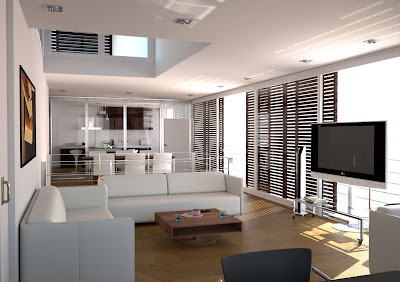The completed design package must clearly convey the design intent. The contract documents provide the information necessary to implement the design. These documents include:
description of the work to be performed by the contractor. The
SOW is used by the contracting agent to synopsize the project
in the bid advertisement.
2. Architectural Floor Plan - Demolition plans, new floor
plans, and reflected ceiling plans.
3. Finish Schedule and Color Legend - The matrix indicating
which finishes are used on specific interior surfaces, and the
list identifying each finish by pattern, color, number, brand
and manufacturer.
4. Finish Floor Plan - A drawing typically used to clarify the
placement of patterns, borders, or combinations of floor finishes
in an area.
5. Elevations, Sections, and Details - Drawings used to
further clarify a design feature. Elevations are drawings which
typically illustrate placement of wallcovering as well as height
of chair rails, bumper guards, plumbing fixtures, and other
design features permanently attached to the walls. Sections
and details generally illustrate how a particular feature is
constructed or attached to another surface or feature, and of
what generic materials it is made.
6. Miscellaneous Drawings - Electrical layouts, enlarged floor
plans of rest rooms and repetitive areas (e.g., dorm rooms),
and construction drawings for built-in cabinetry, etc.
7. Furniture Floor Plan - Scaled layouts showing placement
of existing and new furniture and equipment. Separate
drawings may be required for conventional furniture (modular
or “freestanding” items) and systems furniture (panel mounted
workstations, generally prewired). These drawings provide
references for changes or decisions required during project
construction.
8. Installation Plans - Drawings indicating the placement of
systems furniture panels, electrical connections and power
layouts, and components. Installation plans and/or elevations
may also be required for artwork and signs















0 yorum: